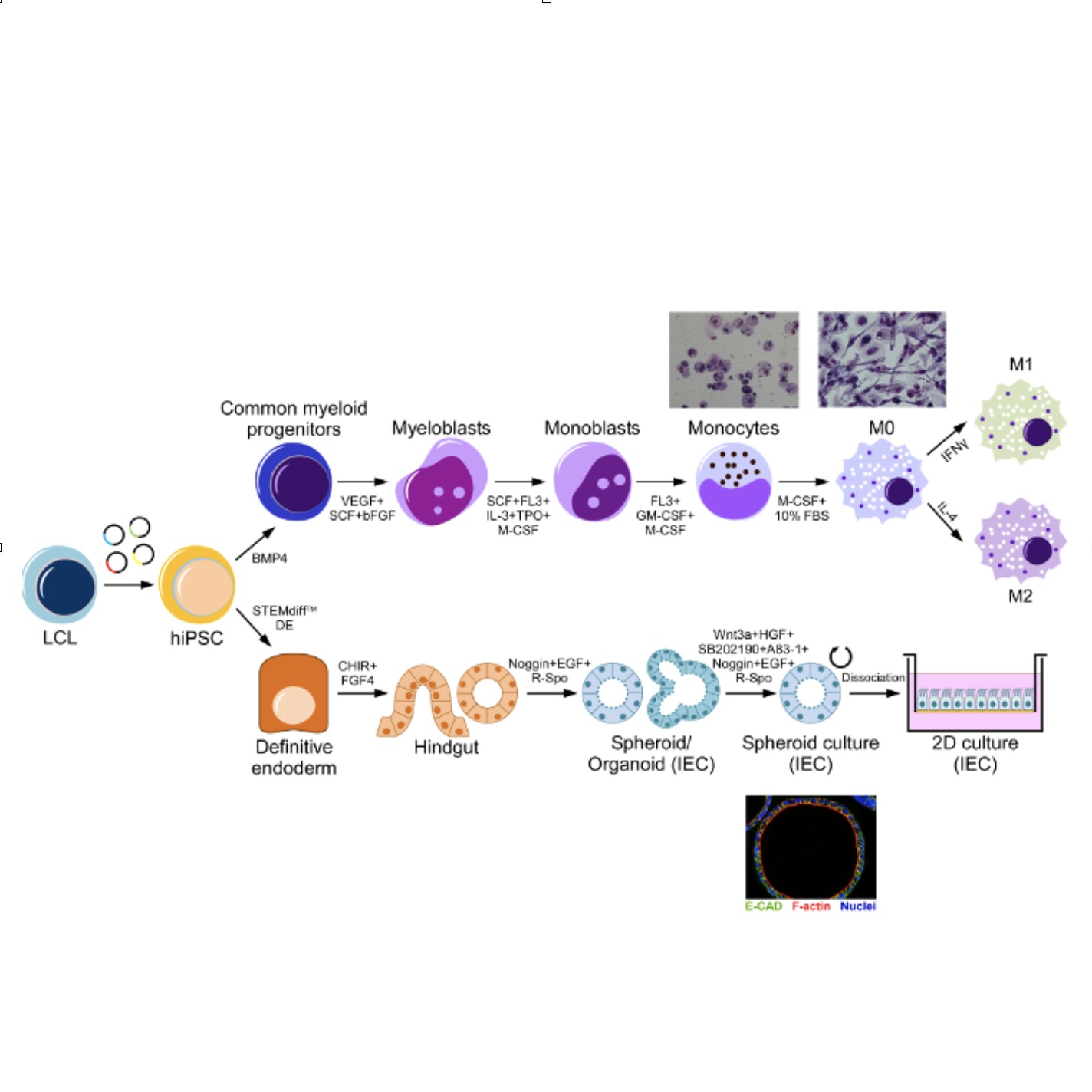
Patient blood, Lymphoblastoid cell lines (LCLs), or skin fibroblast cells are reprogrammed into hiPSC, and then differentiated in a stepwise fashion either into monocyte or macrophage cultures (top) or into 2D and 3D intestinal epithelial cultures (bottom). These models are used to evaluate the impact of genetic variants on structural and functional characteristics.
We aim to use the information from our IBD genetic studies to guide and prioritize our functional studies. We will focus this work on genes that are expressed in intestinal epithelial cells and/or in monocyte/macrophages. Epithelial cells and monocyte/macrophages are important players in IBD, and we have developed significant expertise in developing and studying genetics disease models including patient-derived human induced pluripotent cell (hiPSC) models of intestinal epithelial cells (2D and 3D) and/or in monocyte/macrophages and their functions. These models can be gene- (knock down/over expression) or genotype-specific (e.g. genotype-specific hiPSC, CRISPR, etc.).

Models, culturing approaches and assays used for our studies of intestinal barrier functions.
Selected publications:
Prostaglandins and calprotectin are genetically and functionally linked to the Inflammatory Bowel Diseases. Karaky M, et al. .PLoS Genet. 2022 Sep 26;18(9):e1010189. doi: 10.1371/journal.pgen.1010189. Online ahead of print.PMID: 36155972
IBD-associated G protein-coupled receptor 65 variant compromises signalling and impairs key functions involved in inflammation. Mercier V, et al. .Cell Signal. 2022 May;93:110294. doi: 10.1016/j.cellsig.2022.110294. Epub 2022 Feb 24.PMID: 35218908
Functional screen of inflammatory bowel disease genes reveals key epithelial functions. Ntunzwenimana JC, et al. Genome Med. 2021 Nov 11;13(1):181. doi: 10.1186/s13073-021-00996-7.PMID: 34758847
C1orf106 is a colitis risk gene that regulates stability of epithelial adherens junctions. Mohanan V, et al. Science. 2018 Mar 9;359(6380):1161-1166. doi: 10.1126/science.aan0814. Epub 2018 Feb 1.PMID: 29420262
